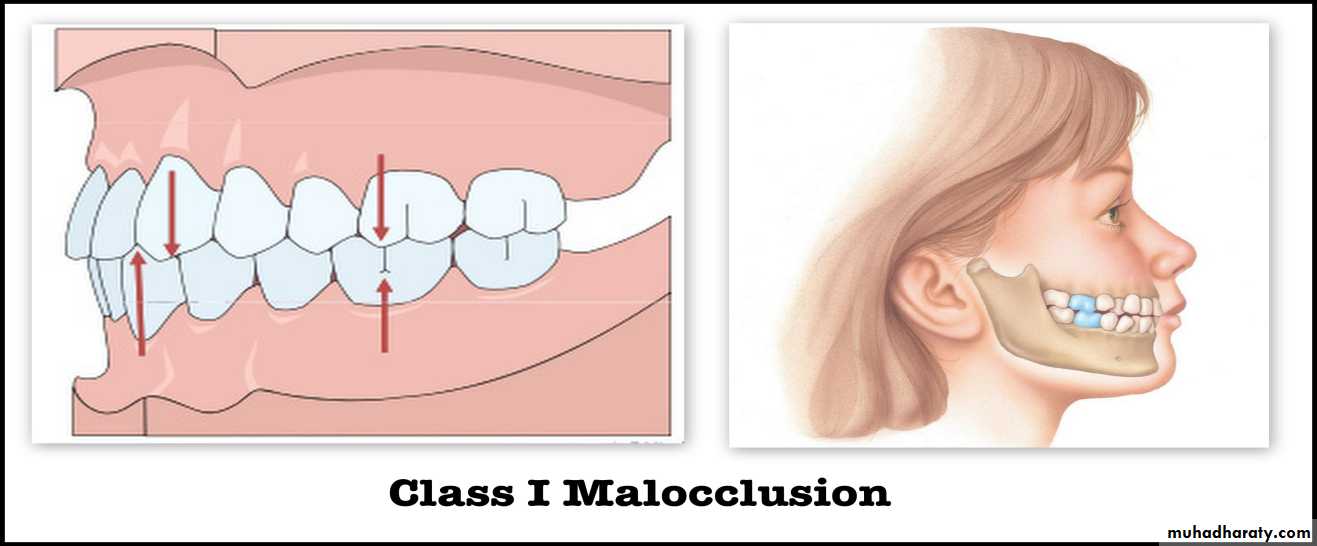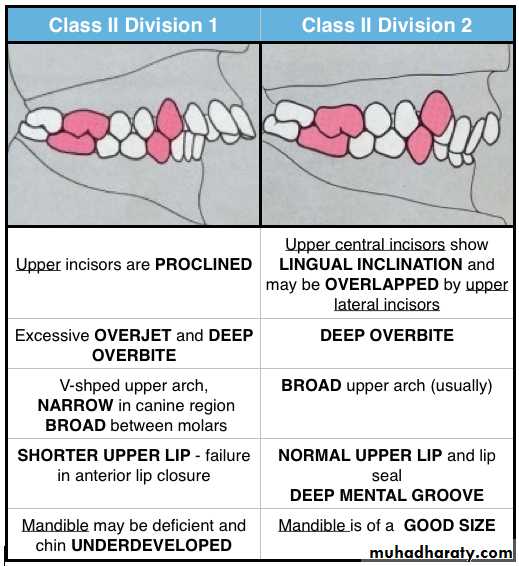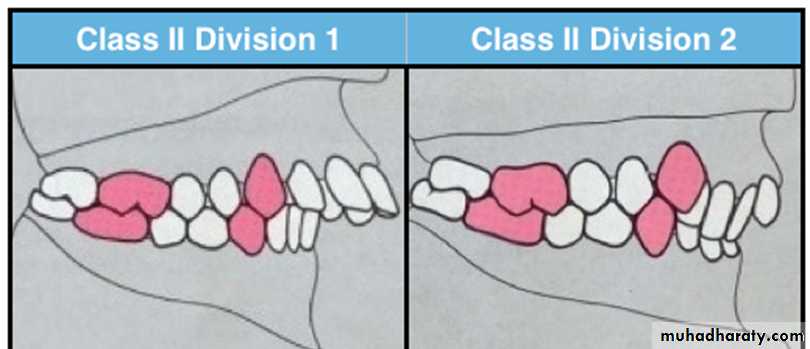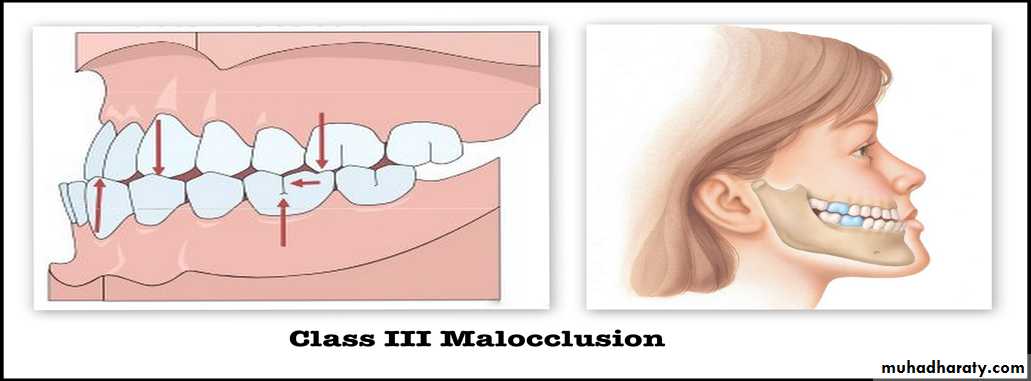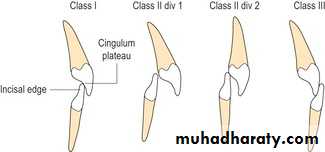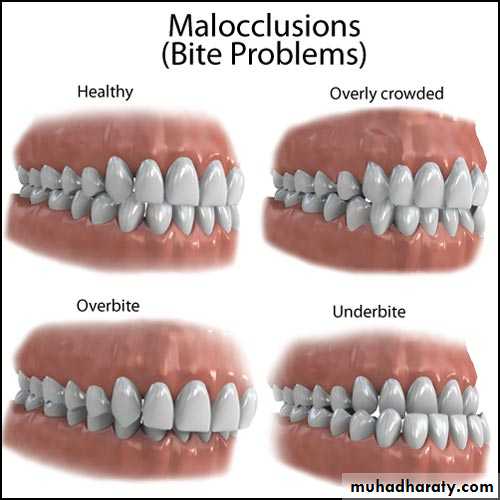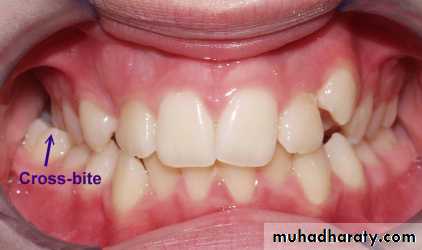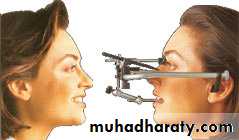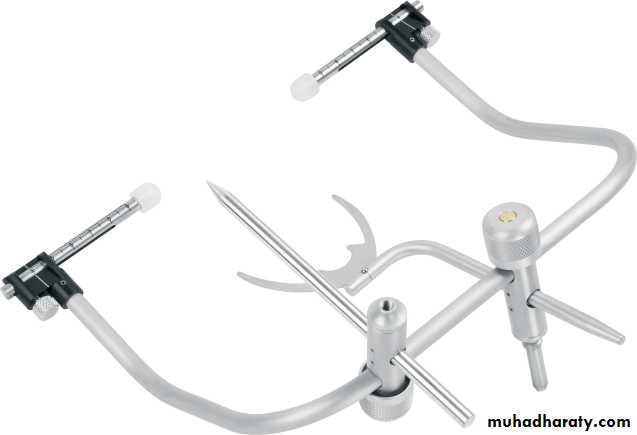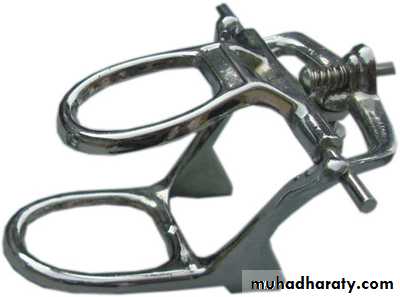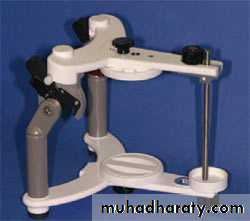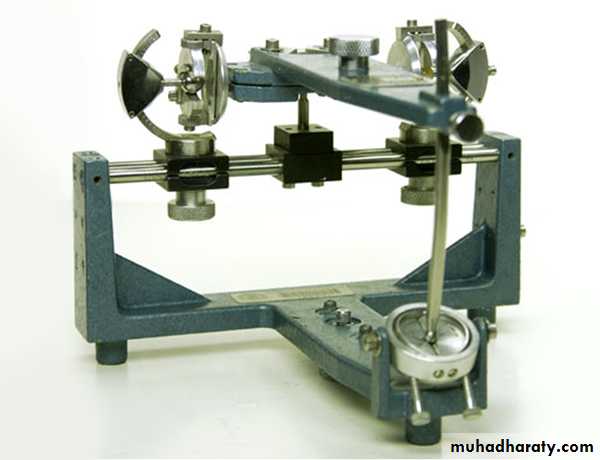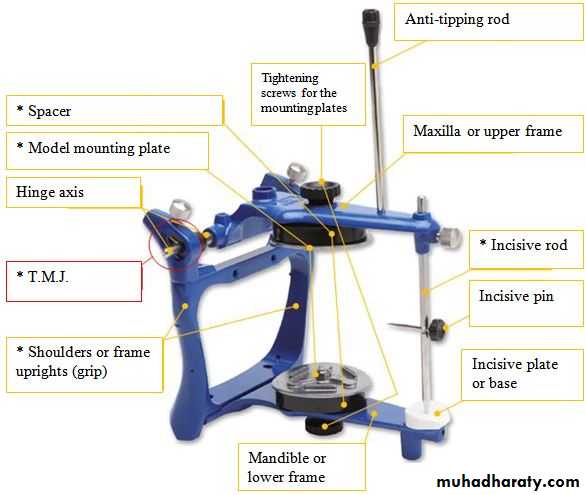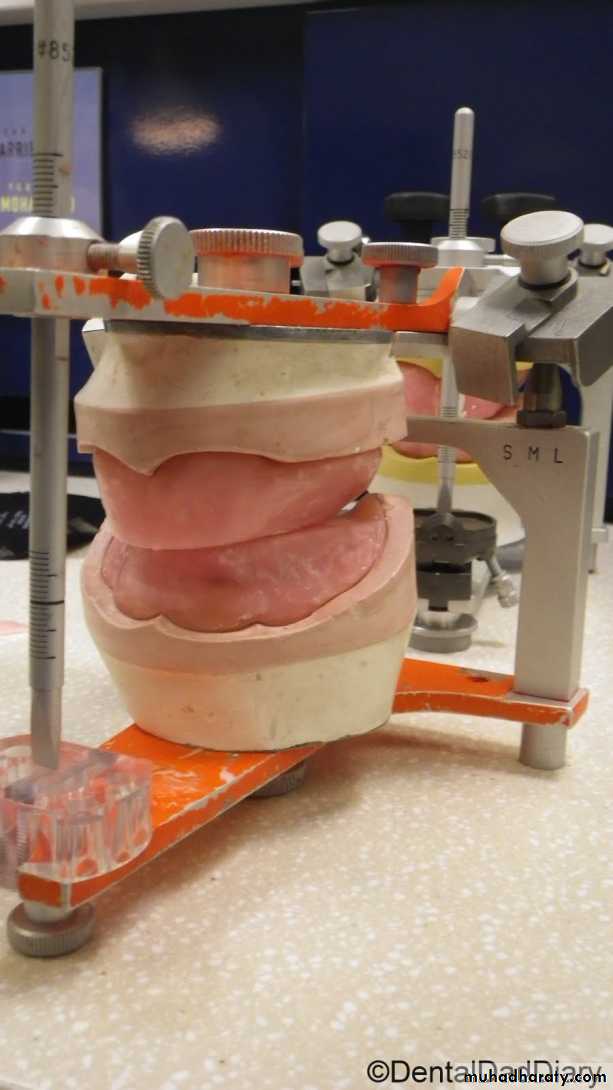Dr. Salah Kh. Al-Rawi
BDS, MSc, Dental Science, Prosthodontist (Baghdad University)PhD, Maxillo-Facial Prostheses (Universiti Sains Malaysia, USM)
2-5-2016
Occlusion, Face bow, Articulator, MountingANGLE’S CLASSIFICATION OF OCCLUSION
Molar Relationship: According to Angle, the mesiobuccal cusp of the maxillary first molar occludes with the buccal groove of the mandibular first molar.Canine Relationship: The maxillary canine occludes with the distal half of the mandibular canine and the mesial half of the mandibular first premolar.
Class I
Molar relationship: The molar relationship shows the mesiobuccal groove of the mandibular first molar is DISTALLY (posteriorly) positioned when in occlusion with the mesiobuccal cusp of the maxillary first molar.
Canine Relationship: The mesial incline of the maxillary canine occludes ANTERIORLY with the distal incline of the mandibular canine. The
Class II
• Class II Division 1: The molar relationships are like that of Class II and the maxillary anterior teeth are protruded. Teeth are proclaimed and a large overjet is present.• Class II Division 2: The molar relationships are Class II where the maxillary central incisors are retroclined. Retroclined and a deep overbite exists.
Class II Malocclusion has tow subtypes
Molar relationship: The mesiobuccal cusp of the maxillary first permanent molar occludes DISTALLY (posteriorly) to the mesiobuccal groove of the mandibular first molar.
Canine Relationship: Distal surface of the mandibular canines are mesial to the mesial surface of the maxillary canines. Mandibular incisors are in complete crossbite.
Class III
The measurement (usually in millimetres) between the upper incisal edge and the labial surface of the lower incisors. The normal value is considered to be approximately 2-3 mm but this is increased in Class 2 Division 1 malocclusions and reduced in Class 3 malocclusions.
Overjet
Overbite medically refers to the extent of vertical (superior-inferior) overlap of the maxillary central incisors over the mandibular central incisors.Overbite
A form of malocclusion where a tooth (or teeth) has a more buccal or lingual position (that is, the tooth is either closer to the cheek or to the tongue) than its corresponding antagonist tooth in the upper or lower dental arch.Cross bite
Face bow: a device used in dentistry to determine the positional relationships of the maxillae to the temporomandibular joint.
The purpose of a face bow is to register the relationship of the patient’s maxillary arch in three planes of space and transfer this information into an articulator that can be adjusted to simulate the patient’s jaw movements .
Face bow
ArticulatorIt is a mechanical instrument that represents the temporomandibular joints and jaws, to which maxillary and mandibular casts may be attached to simulate some or all mandibular movements.
Requirements of an articulator
1- It should hold casts in the correct horizontal relationship.
2- It should hold casts in the correct vertical relationship.
3- The casts should be easily removable and re-attachable.
4- It should provide a positive anterior vertical stop (incisal pin).
5- It should accept face-bow transfer record.
6- It should open and close in a hinge movement.
7- It should be made of non-corrosive and rigid materials.
8- It should not be bulky or heavy.
9- There should be adequate space between the upper and lower members.
10- The moving parts should move freely without any friction.
CLASSIFICATION OF ARTICULATORS
1- Non-adjustable condylar path articulator
A) Simple hinge articulator (Class I).
B) Mean value or fixed condylar path articulator (Class II).
A
B
2- Adjustable condylar path articulator
A- Semi-adjustable condylar path articulator (Class III).B- Fully-adjustable condylar path articulator (Class IV).
parts of articulator
It is the procedure of attaching the maxillary and mandibular casts to the articulator in their recorded jaw relation. It is also called articulation.MOUNTING
PREPARATION OF THE CASTS FOR MOUNTING
1- Determine the midline of the cast according to the midline of incisive papilla and continue this line anteriorly all around the cast.2- The casts should be placed in water for better adhesion of the casts to the mounting plaster.
3- With wax knife, 3-4 V-shape cuts on the base of upper and lower casts, so as to facilitate the laboratory remounting. The cut should be approximately 1/4 inch depth and 1/2 inch width.
4- Lightly coated the base of the casts with Vaseline or any separating medium.
5- The base plate with occlusion rim should be sealed to the cast by wax.
Mounting the maxillary cast
The maxillary cast is first attached to the upper member of the articulator after orientation jaw relation by using the face-bow with adjustable type of articulators, while for the mean value articulator use the mounting table to support the maxillary occlusion rim in its position during mounting. The mandibular cast is articulated after recording the vertical and centric jaw relations.
After recording the orientation jaw relation, the following steps are carried out
1- Enough space should be present between the base of the cast and the upper member of the articulator to accommodate for the plaster material over the cast.
2- Alignment of the midline of the maxillary occlusion rim to the center of the cross midline which found on the mounting table anteriorly and posteriorly.
3- Plaster is mixed according to the manufacturer instruction then the plaster is poured over the base of the cast and the upper member is closed until the incisal pin touches the incisal table.
4- Smoothing and polishing of the plaster is done. The mounting should be cleaned and any debris removed from the articulator and mounting table.
Mounting the mandibular cast
The mandibular cast is mounted after recording the tentative vertical and centric jaw relations.1- The mandibular occlusion rim should be well secured to the mandibular cast with it record base by using wax, also sealing should be done between the maxillary and mandibular rims after making tentative centric jaw relation.
2- Care should be taken that there is no posterior interference between the maxillary and mandibular casts.
3- The articulator with the mounted maxillary cast is inverted to aid in the mounting the mandibular cast.
4- The maxillary occlusal rim with mandibular occlusal rim (centric record) placed on the maxillary cast.
5- The mandibular cast is placed on the mandibular occlusal rim (It should be soaked in water before mounting).
6- The plaster is mixed and poured over the base of the mandibular cast and the articulator is closed until the incisal table touch the incisal pin, then the plaster should be smoothed and polished.

